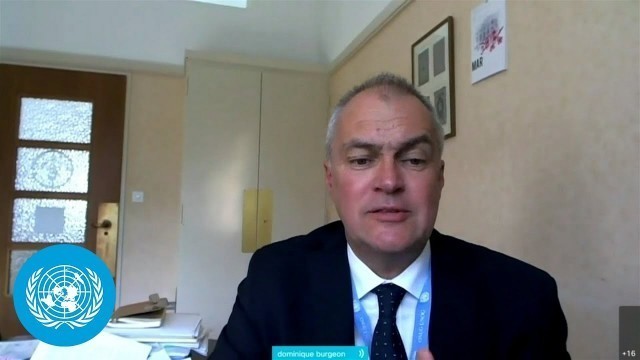

35:42
May 22, 2022
1
1
'The stark warning from the 2021 Global Report on Food Crises released on Wednesday revealed that conflict, or economic shocks that are often related to COVID-19 along with extreme weather, are continuing to push millions of people into acute food insecurity. The number of people facing acute food insecurity and needing urgent life and livelihood-saving assistance has hit a five-year high in 2020 in countries beset by food crises, an annual report launched today by the Global Network Against Food Crises (GNAFC) - an international alliance of the UN, the EU, governmental and non-governmental agencies working to tackle food crises together - has found. Conflict, economic shocks – including due to COVID-19, extreme weather – pushed at least 155 million people into acute food insecurity in 2020. “This year’s report that we just published shows a serious increase in the number of people, indeed, affected by acute food insecurity,” said Dominique Burgeon, Director of the FAO’s Office for Emergencies and Resilience. The report reveals that at least 155 million people experienced acute food insecurity at Crisis or worse levels (IPC/CH Phase 3 or worse) - or equivalent - across 55 countries/territories in 2020 - an increase of around 20 million people from the previous year, and raises a stark warning about a worrisome trend: acute food insecurity has kept up its relentless rise since 2017 - the first edition of the report. Of these, around 133 000 people were in the most severe phase of acute food insecurity in 2020 – Catastrophe (IPC/CH Phase 5) – in Burkina Faso, South Sudan and Yemen where urgent action was needed to avert widespread death and a collapse of livelihoods. At least another 28 million people faced Emergency (IPC/CH Phase 4) level of acute food insecurity in 2020 – meaning they were one step away from starvation - across 38 countries/territories where urgent action saved lives and livelihoods, and prevented famine spreading. Thirty-nine (39) countries/territories have experienced food crises during the five years that the GNAFC has been publishing its annual report; in these countries/territories, the population affected by high levels of acute food insecurity (IPC/CH Phase 3 or worse) increased from 94 to 147 million people between 2016 and 2020. Additionally, in the 55 food-crisis countries/territories covered by the report, over 75 million children under five were stunted (too short) and over 15 million wasted (too thin) in 2020. Countries in Africa remained disproportionally affected by acute food insecurity. Close to 98 million people facing acute food insecurity in 2020 - or two out of three - were on the African continent. But other parts of the world have also not been spared, with countries including Yemen, Afghanistan, Syria and Haiti among the ten worst food crises last year. “What strikes is that ten countries and territories were actually on to 103 million of the 155 million people so it means over 65 percent of those in accurate food insecurity, were just in ten countries: the DRC, Yemen, Afghanistan, Syria, Sudan, northern Nigeria, Ethiopia, South Sudan, Zimbabwe and Haiti,” said Burgeon. The key drivers behind rising acute food insecurity in 2020 were conflict, economic shocks and weather extremes. “The factors behind it have not changed over several years,” said Arif Husain, WFP’s Chief Economist. “It is still conflict, big time. It is still climate extremes, variables. And it is economic marginalization. But the multiplier effect behind all of this is COVID-19. So, what was already going, you know, up in terms of rising numbers got further and accelerated by COVID-19.” According to the report, while conflict will remain the major driver of food crises in 2021, COVID-19 and related containment measures and weather extremes will continue to exacerbate acute food insecurity in fragile economies. “Unfortunately, as we move forward, the outlook is not good. We see that the worsening trend in hanger continues, we project that at least 142 million people expected - continue to expect the crisis level or worst of accurate food insecurity,” said FAO’s Burgeon. To address these challenges the Global Network will step up efforts to promote resilient agri-food systems that are socially, environmentally and economically sustainable, and will support major events this year such as the UN Food Systems Summit, the Convention on Biodiversity, the G20 Summit, the Climate Change Conference, and the Nutrition for Growth Summit. It will also cooperate with the G7 initiative to avert famine.'
Tags: english , média , press conference , press conferences , dpiavl , 6252725867001
See also:

















comments